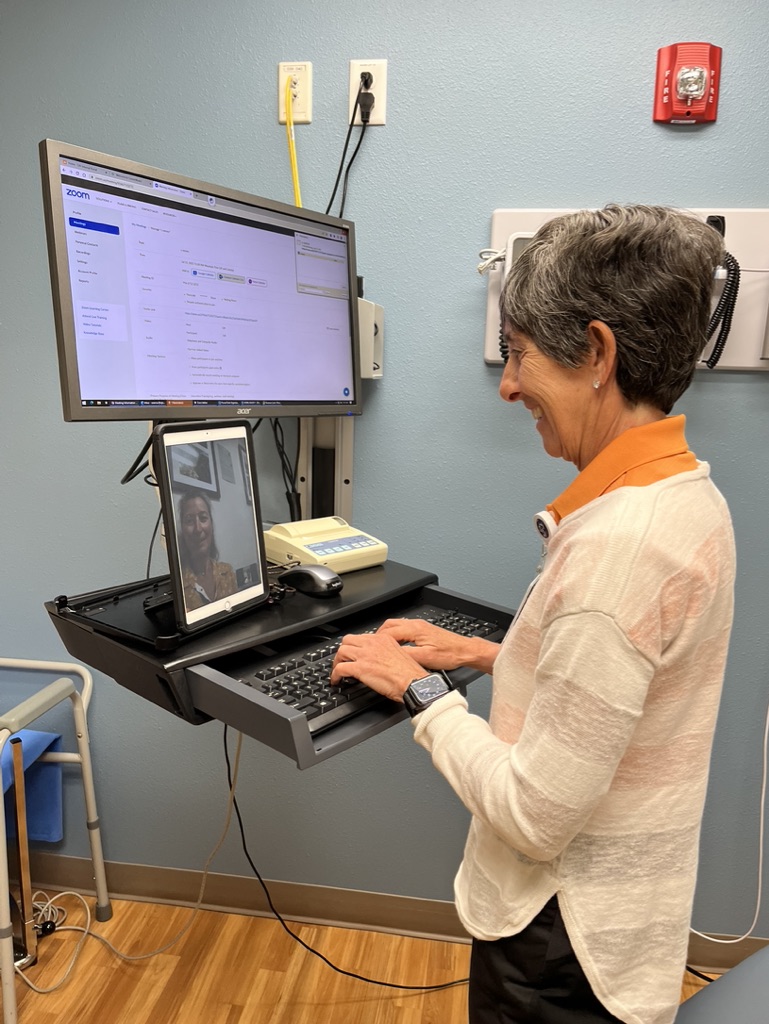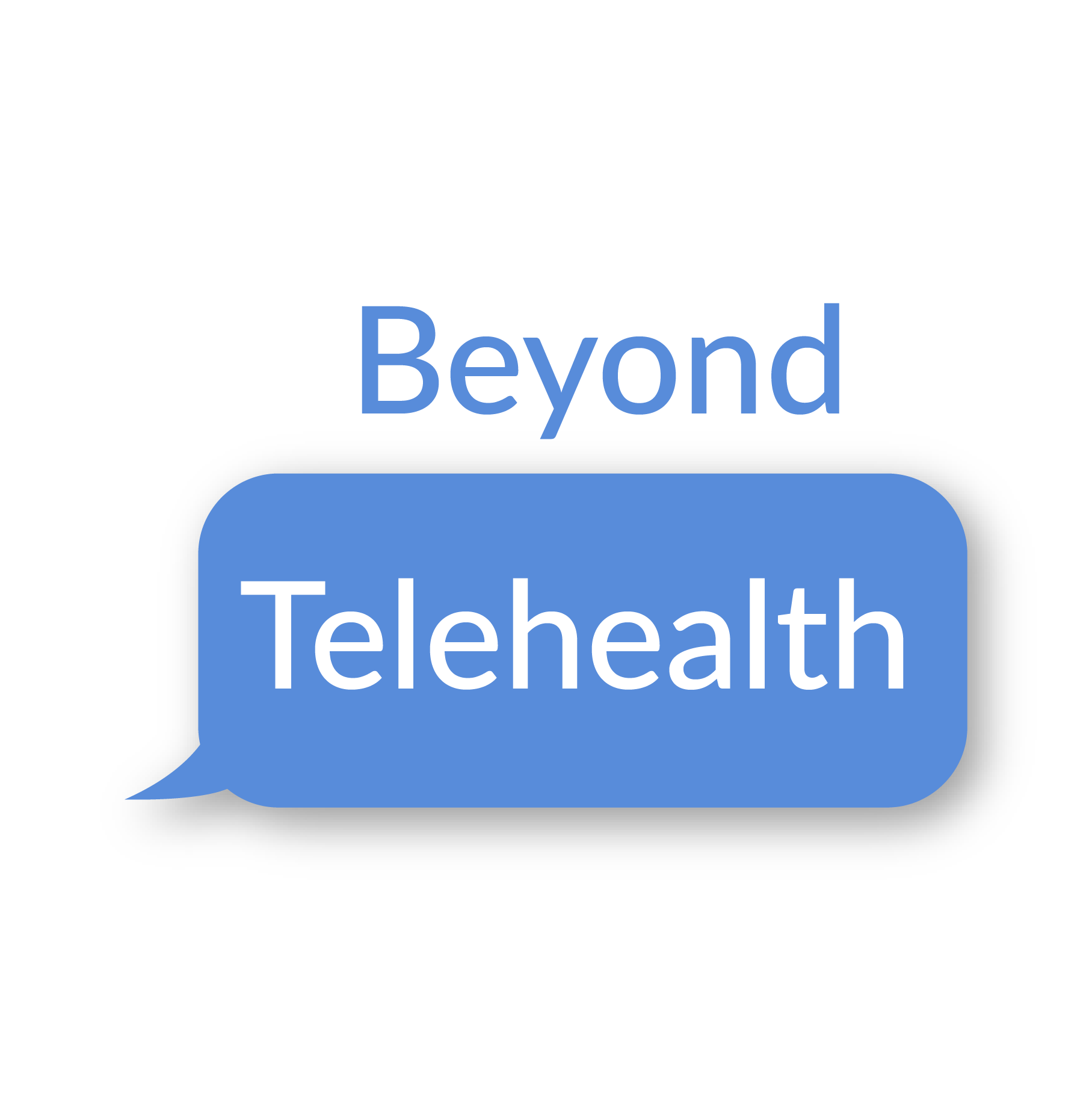When you open the door you could turn left or right, or down the hallway. There are decisions to be made when you step inside. Now, in 2022 health care front door is changing virtually and digitally. You may use an app to seek convenient healthcare or use zoom to see your doctor. A text may be sent to your phone reminding you of your appointment. If you want to pay your bill, you can do that easily on your device. Sometimes, this may seem scary, but you may find that you like the ability and the notion that healthcare is coming to you. Rather than the traditional model of asking the patient to come to their provider.
Finding a silver lining during COVID-19 can be difficult, but one rainbow from this storm is that the pandemic has catapulted medicine to widely accept the utilization of telehealth. While we all await the new normal of everyday life without the threat of COVID-19, healthcare should use this moment to leap forward.
Efforts to limit office visits to prevent the spread of disease has necessitated the rapid implementation of telehealth. Telehealth access has helped keep the pace for patients for routine wellness and follow-up visits, reducing the risk for progression of chronic health issues and/or delayed diagnosis of new ones, and re-emergence of other preventable illnesses.
I first understood the immense value of telehealth in 2018. I began to see patients using zoom ( Tele Urology) who lived in Pinedale, Rock Springs, and Dubois. It was daunting to explain to both patients and clinicians how this new tool worked. Even prior to the pandemic patients were thrilled that they didn’t have to drive through a canyon or over a pass to see me.
Until governments across the country facilitated the rapid expansion of telehealth due to the pandemic, barriers included regulatory hurdles, billing, and institutional resistance to change. These difficulties made the broad implementation of telehealth arduous. Now that these barriers have been lifted and telehealth has been proven effective for a variety of visits, we should use this moment to reevaluate our delivery of healthcare and create more access where we can. Telehealth brings access to rural Wyomingites where provider shortages and travel are inescapable obstacles. Telehealth can help hard working people miss less work and students miss less school.
Telehealth is not a cure-all, but should be a critical part of our new normal in medicine. To learn more go to wyomingtelehealth.org
FINDING THE RIGHT CANDIDATES FOR TELEHEALTH
Telehealth has proved during the pandemic to be a powerful diagnostic and treatment option. Telehealth is accessible and convenient, and with the reimbursement support of the federal government during the outbreak, has been affordable for patients and providers. But what makes a good patient candidate for telehealth?
Many Wyomingites are growing more accustomed to using their computer for ordering groceries, socializing, learning, communicating with friends and families, and paying their bills, among other services. Making the transition to telehealth services for these patients is a natural next step for many and most users report they like telehealth services—some even prefer them.
One thing is for certain, telehealth expansion is going to continue to expand. Right now, we are only experiencing the initial phases of telehealth potential. There are so many new ways to keep people in their homes to manage their health and most importantly, prevent trips to the hospital.
For the benefit of COVID-19 patients who are being treated safely at home with telehealth visits; for rural patients with limited health care access; for the increasing numbers of patients with behavioral health issues; for homebound patients; and, for patients with chronic illnesses, providers and patients should continue their pursuit to embrace telehealth as an effective and quality alternative when needed for most appointments. To learn more visit wyomingtelehealth.org
TELEMENTAL HEALTHCARE
One in five people will have some kind of mental illness in their lifetime. Yet despite how common these conditions are, stigma remains the greatest barrier to individuals seeking help regarding their mental illness. What if you could access mental healthcare in the privacy of your own chosen location?
Mental health is just as important as physical health, and utilizing telemental health can help reduce barriers such as travel, stigma, and finding the time to fit an appointment into your busy schedule. Can you hop onto an appointment on your lunch break? No problem. Telemental health can fit into your busy schedule.
Be it adjusting to working from home, learning how to parent during a pandemic, or refraining from seeing friends and family, we’ve all had to change our usual way of life in one way or another, and it’s been hard. With the ongoing threat of COVID-19 and the rest of our everyday stresses like financial troubles, relationships, sexual identity, depression, illness, and loneliness to name a few, talking with someone can help.
Wyoming is utilizing telemental health in a variety of ways including the new 988 suicide hotline. Residents in crisis should call 988. It’s free, and confidential and can help you and your loved ones who might need help.
The Digital front door is now open for business and I would encourage you to be bold and walkthrough. Most likely you will find new ways to seek help in this new normal of health care.

Dr. Lisa Finkelstein is a (semi-retired) Urologist in Jackson, Wyoming. She is Wyoming State Representative for Urology and the Secretary Treasurer for the AACU. She is the Medical Director of Telehealth at St. Johns Health and past President of the Wyoming Medical Society. As of 2021, she is on the AUA telehealth task force. She is on the board of the NRTRC (Northwest Regional Telehealth Resource Center) and continues to work with the Wyoming Telehealth Network for many years.. When the pandemic started in March 2020 she and her team were ready with the framework for telemedicine already in place over the previous 2 years.
The first specialty to use telemedicine was Urology with Dr. Finkelstein’s leadership. She has presented many times and featured in several articles about Telehealth. One of her passions is teaching medical students about telehealth. She is a true champion of telemedicine and believes
that this new way of practicing medicine is here to stay.


Comments are closed